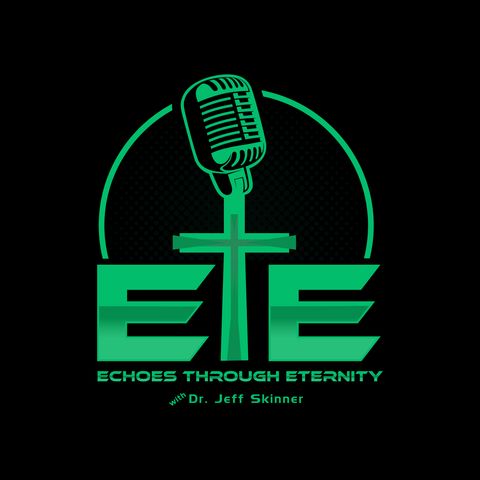Revelation All_things_new_Part3 w/Rev. Brad Bellomy

Descarga y escucha en cualquier lugar
Descarga tus episodios favoritos y disfrútalos, ¡dondequiera que estés! Regístrate o inicia sesión ahora para acceder a la escucha sin conexión.
Revelation All_things_new_Part3 w/Rev. Brad Bellomy
Esta transcripción es generada automáticamente. Ten en cuenta que no se garantiza una precisión absoluta.
Descripción
In Part 3 of "Revelation: All Things New," Dr. Jeff and Rev. Brad return to the Book of Revelation, offering profound insights from the perspective of its original audience, the...
mostra más**Key Symbols and Their Probable Meanings:**
1. **Seven Churches (Revelation 1:4):** These were real, historical churches in Asia Minor. The number seven signifies completeness or perfection, suggesting that Revelation's message is intended for the entire Church, extending beyond these specific congregations.
2. **Seven Lampstands (Revelation 1:12-13):** These symbolize the seven churches. Lampstands emit light, representing the churches' role in spreading the illumination of Christ within their communities.
3. **Son of Man (Revelation 1:13):** This title, attributed to Jesus, draws from the book of Daniel (Daniel 7:13-14) and emphasizes Jesus' divinity and supreme authority.
4. **Seven Stars (Revelation 1:16):** These represent the angels or messengers of the seven churches. These "angels" likely served as leaders or messengers responsible for conveying and reading John's letter to each congregation.
5. **White Robes (Revelation 3:4-5):** White symbolizes purity and victory. Those who triumph over trials and tribulations are promised white robes, signifying their righteousness and ultimate success.
6. **Candlesticks (Revelation 2:5):** Jesus warns that the lampstand will be removed from the church in Ephesus if they do not repent. This symbolizes the potential loss of their spiritual influence unless they return to their initial fervor for Christ.
7. **Nicolaitans (Revelation 2:6, 2:15):** The Nicolaitans were a heretical group within the church, and their actions and teachings were condemned. The origin and details of their beliefs remain unclear.
8. **Throne of Satan (Revelation 2:13):** In Pergamum, this likely referred to the city's connection with emperor worship and various pagan cults, highlighting the spiritual challenges faced by the church there.
9. **Jezebel (Revelation 2:20):** This symbolizes a woman in the church of Thyatira who led others into idolatry and sexual immorality, reminiscent of the biblical Jezebel in the Old Testament.
10. **New Jerusalem (Revelation 21:2):** This represents the future heavenly abode of the redeemed, embodying the hope of a renewed and perfected world where God dwells with His people.
11. **The Dragon (Revelation 12:3-9):** The dragon represents Satan, who seeks to persecute and oppose the Church. This imagery may have been understood in the context of Roman oppression and persecution.
12. **The Beast (Revelation 13:1-10):** The beast often symbolizes oppressive political powers or rulers, potentially representing the Roman Empire or other tyrannical regimes.
13. **666 (Revelation 13:18):** This enigmatic number is associated with the beast and has sparked much speculation. It may have held a specific meaning understood by the original audience, potentially related to numerical codes denoting certain names or titles. Additionally, the use of the number six, juxtaposed with the number seven symbolizing completeness, could undermine claims of divine authority, challenging the emperor's insistence on god-like status.
These examples illustrate the rich tapestry of symbolism in Revelation. Interpretations of these symbols may vary among scholars and theologians, but grounding our understanding in the historical and cultural context of the original seven churches provides invaluable insights into their likely meanings.
Información
| Autor | Dr. Jeffery D. Skinner |
| Organización | Dr. Jeffery D. Skinner |
| Página web | - |
| Etiquetas |
Copyright 2024 - Spreaker Inc. an iHeartMedia Company
